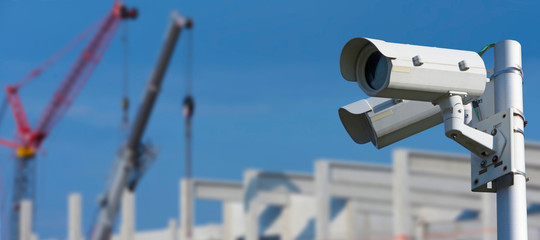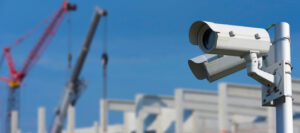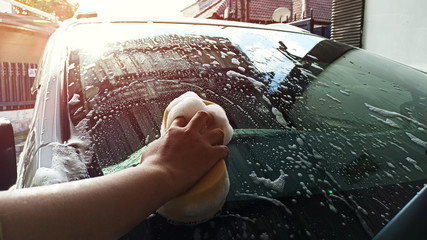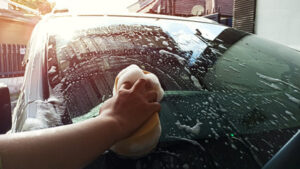In a world of uncertainty, ensuring safety and security at events has become paramount. From concerts and festivals to corporate gatherings and sporting events, organizers face the daunting task of orchestrating a seamless experience and safeguarding attendees, performers, and staff.
This article delves into the indispensable role of event security services from DMAC Security. Exploring their significance, challenges, and evolving strategies for maintaining order and tranquility.
The Significance of Event Security Services
 Regardless of scale or nature, events attract diverse crowds with varied interests and intentions. Amidst the excitement and euphoria, potential risks loom large, ranging from minor disturbances to severe threats like terrorism and violence. Event security services serve as the first line of defense against such perils, employing a blend of proactive measures and reactive responses to mitigate risks and ensure a safe environment for all.
Regardless of scale or nature, events attract diverse crowds with varied interests and intentions. Amidst the excitement and euphoria, potential risks loom large, ranging from minor disturbances to severe threats like terrorism and violence. Event security services serve as the first line of defense against such perils, employing a blend of proactive measures and reactive responses to mitigate risks and ensure a safe environment for all.
- Risk Assessment and Planning: A comprehensive risk assessment forms the foundation of effective event security. Security professionals can devise tailored strategies to address specific threats by identifying potential hazards and vulnerabilities. Factors such as venue layout, crowd size, and the nature of the event are meticulously analyzed to determine the appropriate security measures.
- Crowd Management: Managing large crowds requires precision and expertise. Trained security personnel employ crowd control tactics to regulate the flow of attendees, prevent overcrowding, and address any potential disturbances swiftly. Through crowd monitoring and communication, they maintain order while minimizing the risk of stampedes or chaos.
- Access Control and Screening: Limiting access to authorized personnel and screening attendees for prohibited items are crucial aspects of event security. Security checkpoints equipped with metal detectors, bag searches, and ticket validation procedures help deter unauthorized entry and enhance overall safety. Advanced technologies such as facial recognition and biometric authentication further bolster access control efforts.
- Emergency Response and Crisis Management: Despite meticulous planning, unforeseen emergencies can arise during events. Whether it’s medical emergencies, natural disasters, or security breaches, event security services must be prepared to respond promptly and effectively. Trained personnel implement emergency protocols, coordinate with emergency services, and guide attendees to safety in times of crisis.
Challenges in Event Security
While event security services strive to uphold safety standards, they face a myriad of challenges in an ever-evolving landscape.
- Dynamic Threat Landscape: The threat landscape is constantly evolving, with new risks emerging regularly. Security professionals must stay abreast of current trends, emerging threats, and geopolitical developments to adapt their strategies accordingly. From cyber threats to lone wolf attacks, the breadth of potential risks necessitates a proactive and agile approach to security.
- Balancing Security and Experience: Striking a balance between stringent security measures and attendee experience is a delicate task. Excessive security measures can detract from the event’s atmosphere and deter attendees, while lax security compromises safety. Event organizers must find the optimal balance by implementing non-intrusive yet effective security protocols that prioritize both safety and attendee satisfaction.
- Resource Constraints: Limited resources, including budgetary constraints and personnel shortages, pose significant challenges to event security. Organizers must allocate resources judiciously, prioritizing critical areas while optimizing efficiency. Collaborations with local law enforcement agencies, private security firms, and technology providers can help augment resources and enhance security capabilities.
- Technological Advancements: While technology offers innovative solutions for security challenges, it also presents new vulnerabilities and complexities. Cyber threats targeting event infrastructure, data breaches, and the misuse of surveillance technologies underscore the need for robust cybersecurity measures and ethical considerations in deploying technological solutions.
Evolving Strategies in Event Security
In response to emerging challenges and technological advancements, event security services are embracing innovative strategies to enhance safety and resilience.
- Integration of Technology: From AI-powered surveillance systems to mobile applications for real-time communication, technology plays a pivotal role in modern event security. Integrated security platforms consolidate data from various sources, enabling seamless monitoring, threat detection, and incident response. Drones equipped with cameras provide aerial surveillance, while facial recognition technology enhances access control measures.
- Behavioral Analysis and Threat Assessment: Behavioral analysis techniques, coupled with threat assessment methodologies, enable security personnel to identify potential threats based on behavioral cues and suspicious activities. By leveraging data analytics and machine learning algorithms, security teams can discern patterns, detect anomalies, and preemptively intervene to mitigate risks.
- Community Engagement and Communication: Effective communication and community engagement are essential pillars of event security. Establishing clear communication channels, disseminating safety guidelines, and fostering collaboration with attendees empower individuals to contribute to their own safety. Community policing initiatives encourage proactive reporting of suspicious behavior and foster a sense of collective responsibility for security.
- Training and Professional Development: Continuous training and professional development are imperative for security personnel to adapt to evolving threats and technologies. Specialized training programs cover a range of topics, including conflict resolution, emergency response, cultural competency, and technological proficiency. Scenario-based exercises and simulations enhance preparedness and enable security teams to hone their skills in realistic scenarios.
Importance of Event Security Services:
Events serve as platforms for entertainment, networking, and cultural exchange, attracting diverse audiences from across the globe. However, amidst the festivities, the safety and security of attendees must remain paramount. Event security services play a crucial role in safeguarding individuals, property, and the overall integrity of the event. From crowd management and access control to emergency response and crisis management, security professionals ensure a safe and secure environment, enabling attendees to enjoy the event without apprehension.
Cost of Event Security Services:
The cost of event security services varies depending on factors such as the size, duration, location, and nature of the event. Comprehensive security measures, including personnel, equipment, and technology, contribute to the overall cost. High-profile events or those with elevated security risks may incur higher expenses due to the need for specialized training, additional personnel, and enhanced security protocols. While the upfront cost of security services may seem substantial, it pales in comparison to the potential consequences of security breaches, which can include legal liabilities, reputational damage, and loss of revenue.
Investment in Safety and Security:
Viewed as an investment rather than an expense, event security services offer invaluable protection and peace of mind. Organizers recognize that prioritizing safety enhances the event’s reputation, fosters attendee confidence, and ensures regulatory compliance. Moreover, proactive security measures can mitigate potential risks, minimize disruptions, and preserve the event’s continuity, thereby safeguarding the substantial investments made in planning, promotion, and production. By allocating resources towards comprehensive security solutions, organizers demonstrate their commitment to attendee welfare and uphold their duty of care.
Risk Mitigation and Liability Reduction:
Beyond the immediate benefits of ensuring attendee safety, event security services serve as a proactive risk mitigation strategy. By identifying and addressing potential security vulnerabilities, organizers mitigate the likelihood of security incidents and their associated liabilities. Adequate security measures can reduce the risk of accidents, injuries, property damage, and legal claims, thereby safeguarding the financial interests and reputations of event organizers, sponsors, and stakeholders. In essence, the cost of security services is a prudent investment in mitigating potential risks and liabilities that could far outweigh the initial expenditure.
Societal and Ethical Imperatives:
Beyond financial considerations, there exists a societal and ethical imperative to prioritize safety and security at events. In an increasingly interconnected world marked by geopolitical tensions, social unrest, and emerging threats, events serve as potential targets for malicious actors seeking to sow chaos and instill fear. By investing in robust security measures, event organizers contribute to the collective resilience of communities, demonstrate solidarity with attendees, and uphold fundamental principles of safety and human dignity. Ultimately, the cost of event security services is not merely a financial transaction but a reflection of our shared commitment to fostering secure and inclusive environments for all.
Event security services play a pivotal role in safeguarding attendees, preserving the integrity of events, and mitigating potential risks. By employing a multifaceted approach encompassing risk assessment, crowd management, and technological innovations, security professionals strive to ensure safety while preserving the overall event experience. However, navigating the complexities of event security requires vigilance, adaptability, and collaboration among stakeholders. As the landscape of threats continues to evolve, the resilience and ingenuity of event security services will remain indispensable in ensuring the safety and success of events worldwide.


 Security
Security
